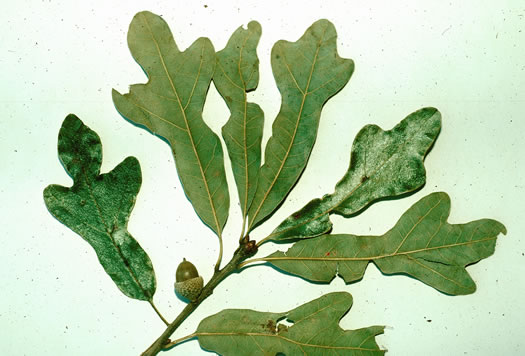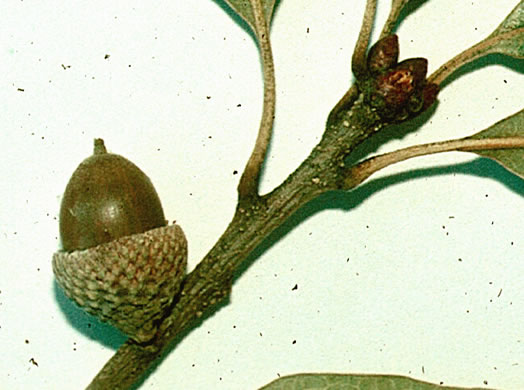Spermatophytes (seed plants): Angiosperms (flowering plants): Eudicots: Core Eudicots: Rosids: Fabids: Fagales
Genus: Quercus
Subgenus: Quercus
Section: Quercus (white oaks)
WEAKLEY'S FLORA OF THE SOUTHEASTERN US (4/24/22):
Quercus similis
FAMILY
Fagaceae
Go to FSUS key
Dig deeper at SERNEC, a consortium of southeastern herbaria.
Read Edible Wild Plants: Oak from Lytton Musselman and the Southern Appalachian Botanical Society.
Read more about Swamp Post Oak at Vascular Plants of North Carolina.
SYNONYMOUS WITH
PLANTS NATIONAL DATABASE:
Quercus similis
FAMILY
Fagaceae
SYNONYMOUS WITH Flora of North America
Quercus similis
INCLUDED WITHIN -
Quercus stellata
COMMON NAME:
Swamp Post Oak, Bottomland Post Oak, Delta Oak
To see larger pictures, click or hover over the thumbnails.
Ron Lance rwl_similis_lvs
September
Leaves mostly 3-lobed above middle, but variable & not with a uniform shape, per Woody Plants of the Southeastern US: A Winter Guide (Lance, 2004).
Ron Lance rwl_similis_lvs2
September
Acorn cup thin, covering 1/3 to 1/2 of nut, which is about 14mm long, per Woody Plants of the Southeastern US: A Winter Guide (Lance, 2004).
WEAKLEY'S FLORA OF THE SOUTHEASTERN US (4/24/22):
Quercus similis
FAMILY
Fagaceae
SYNONYMOUS WITH
PLANTS NATIONAL DATABASE:
Quercus similis
FAMILY
Fagaceae
SYNONYMOUS WITH
Flora of North America
Quercus similis
INCLUDED WITHIN
-
Quercus stellata
If a search such as "Carex leptalea var. leptalea" doesn't deliver the results you want, try "Carex leptalea".
Or, to minimize chances of a misspelling, try just "Carex le".
Less is more: If "pencil flower" doesn't deliver the results you want, try "pencil".



